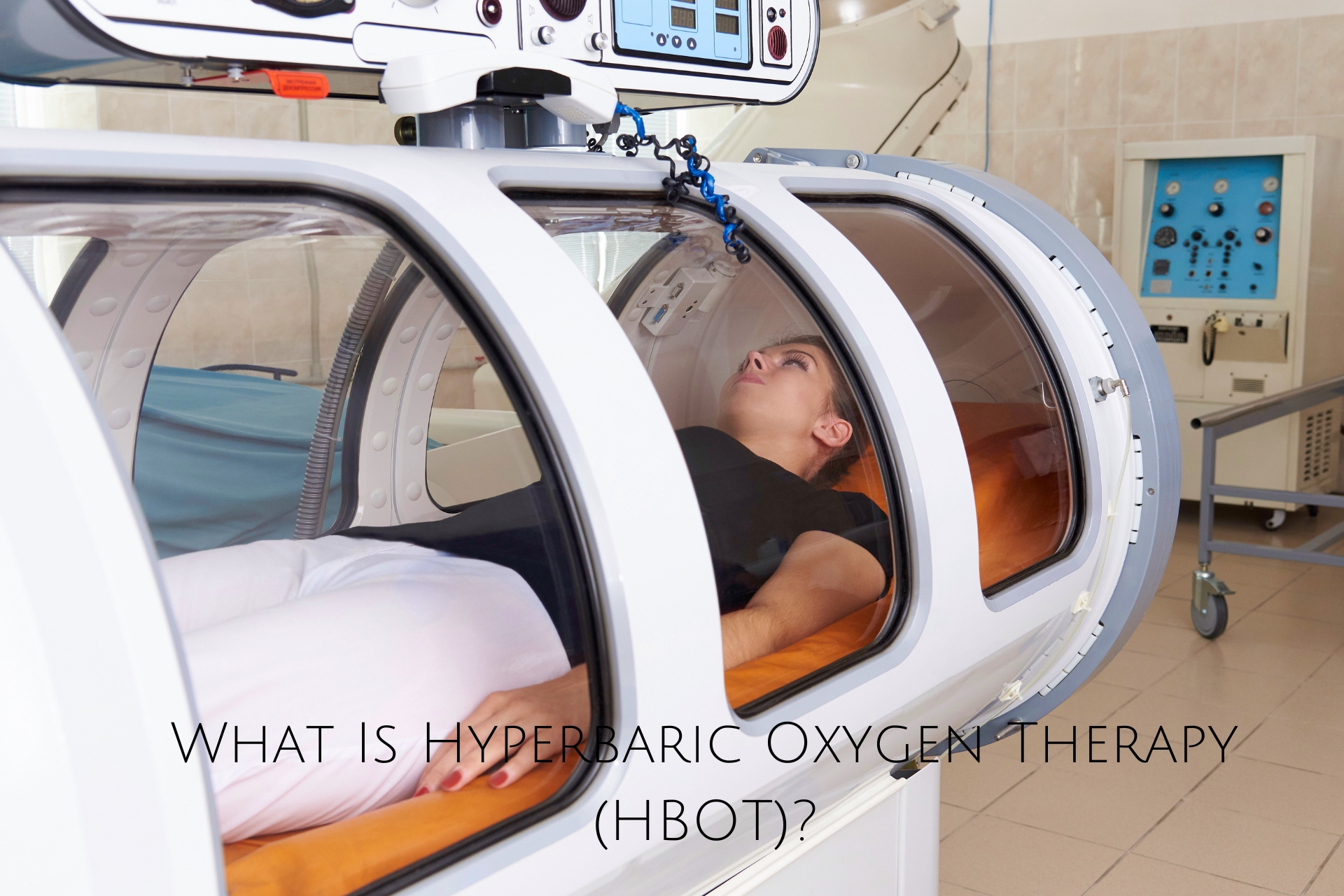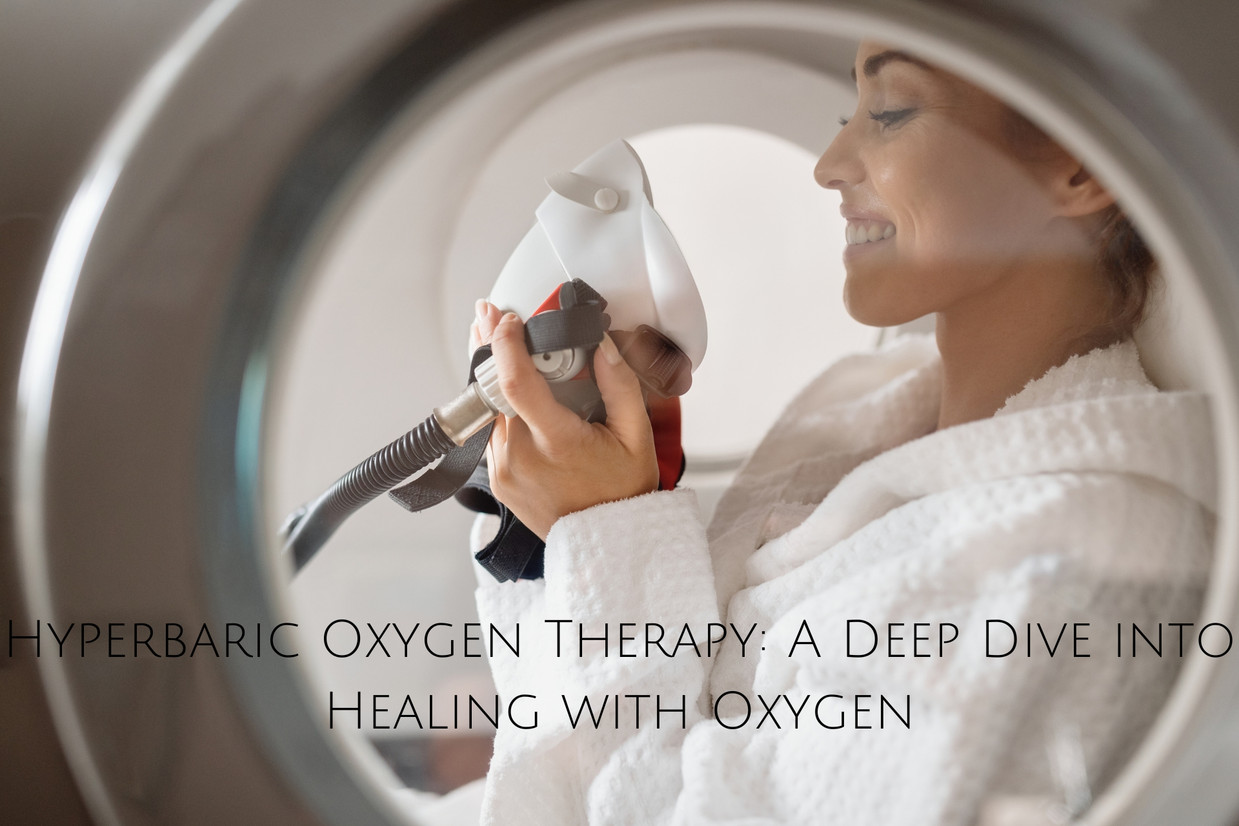Hyperbaric Oxygen Therapy: A Deep Dive into Healing with Oxygen
In the quest for health and healing, oxygen has always played a pivotal role. But what if we could supercharge its delivery to our bodies and amplify its healing potential? Enter Hyperbaric Oxygen Therapy (HBOT)—an innovative treatment where patients breathe pure oxygen in a pressurized chamber. This unique approach enhances oxygen absorption into the bloodstream, unlocking the body’s natural ability to repair, rejuvenate, and recover.
From treating critical medical conditions to offering new possibilities in wellness and longevity, HBOT is a blend of ancient principles and modern science. Let’s take an in-depth look at what HBOT is, how it works, its applications, and its potential to revolutionize health.
What Is Hyperbaric Oxygen Therapy (HBOT)?

HBOT is a medical treatment that uses increased atmospheric pressure to deliver pure oxygen to the body. Typically, humans breathe about 21% oxygen at normal atmospheric pressure. In an HBOT chamber, the oxygen concentration increases to 100%, and the pressure is elevated to 1.5 to 3 times normal atmospheric levels.
This enhanced environment allows oxygen to dissolve more efficiently into all bodily fluids, including plasma, lymph, and cerebrospinal fluid. This process enables oxygen to reach areas with poor blood flow, delivering vital nutrients to tissues that would otherwise struggle to heal.
The treatment typically takes place in specialized chambers and is monitored by trained professionals.
Types of Hyperbaric Chambers
- Monoplace Chambers: These are designed for one person and resemble a long, transparent tube. The entire chamber is pressurized, and the patient breathes pure oxygen directly.
- Multiplace Chambers: Larger chambers that accommodate multiple patients at once. Patients wear masks or hoods to breathe pure oxygen while the chamber itself is pressurized.
Each session typically lasts 60–90 minutes, and the number of sessions varies depending on the condition being treated.
How Does HBOT Work?

The therapeutic power of HBOT lies in its ability to super-saturate the blood with oxygen. Under normal circumstances, oxygen is transported primarily by red blood cells. However, the heightened pressure in HBOT allows oxygen to dissolve directly into the plasma, reaching areas with limited blood supply or damaged capillaries.
This influx of oxygen facilitates:
- Cellular Repair: Oxygen boosts ATP production, the energy currency of cells, which is crucial for repair and regeneration.
- Angiogenesis: Promotes the formation of new blood vessels, improving circulation to injured tissues.
- Reduced Inflammation: Modulates the immune response to reduce swelling and oxidative stress.
- Enhanced Immune Function: Supports the body's ability to fight infections by providing oxygen-rich conditions that are unfavorable for harmful bacteria.
- Neuroprotection: Increases oxygen delivery to the brain, potentially aiding in recovery from strokes, brain injuries, and cognitive decline.
Applications of Hyperbaric Oxygen Therapy

HBOT has a diverse range of uses, from treating life-threatening medical conditions to enhancing general well-being.
FDA-Approved Applications
The U.S. Food and Drug Administration (FDA) has approved HBOT for conditions where oxygen therapy is critical to recovery:
- Non-Healing Wounds: Particularly beneficial for diabetic ulcers, which are resistant to traditional treatments.
- Carbon Monoxide Poisoning: Rapidly clears carbon monoxide from the bloodstream, restoring oxygen levels.
- Radiation Therapy Side Effects: Addresses tissue damage caused by cancer treatments, such as radiation-induced necrosis.
- Chronic Osteomyelitis: Assists in treating persistent bone infections.
Emerging and Experimental Uses
HBOT is also being studied for its effectiveness in treating other conditions, including:
- Traumatic Brain Injury (TBI): Helps improve cognitive and neurological function in individuals with brain trauma.
- Post-Stroke Recovery: Enhances oxygen supply to damaged brain tissues, supporting recovery and reducing long-term disability.
- Long COVID: Shows potential in alleviating lingering symptoms, such as brain fog and chronic fatigue.
- Neurodegenerative Diseases: Early research suggests benefits in managing conditions like Alzheimer’s and Parkinson’s by improving blood flow to the brain.
- Athletic Recovery: Popular among professional athletes, HBOT accelerates muscle recovery and reduces inflammation after intense physical activity.
- Aging and Longevity: Preliminary studies indicate that HBOT may help lengthen telomeres (protective caps on chromosomes) and promote cellular rejuvenation.
Benefits of HBOT

The benefits of HBOT extend beyond healing injuries. It has systemic effects that support overall health and wellness:
- Accelerated Recovery: By increasing oxygen delivery, HBOT speeds up the healing process for wounds, surgeries, and injuries.
- Reduced Inflammation: Oxygen-rich environments promote anti-inflammatory pathways, alleviating pain and swelling.
- Brain Health Support: Enhances cognitive function and aids in recovery from brain-related injuries or conditions.
- Immune System Boost: Improves the body’s ability to fight infections and resist chronic illnesses.
- Cellular Rejuvenation: HBOT stimulates collagen production and cell regeneration, supporting anti-aging efforts.
What to Expect During an HBOT Session

- Before the Session: A medical professional will evaluate your condition to determine if HBOT is appropriate. You may be asked to avoid certain medications or substances, such as alcohol or tobacco, before treatment.
- During the Session: Once inside the chamber, you may experience mild ear discomfort, similar to the sensation during an airplane ascent. This can be alleviated by yawning or swallowing. Sessions are painless, and many patients relax, read, or even nap during treatment.
- After the Session: Most patients feel normal after treatment and can resume daily activities immediately.
Potential Risks and Side Effects

While HBOT is generally safe, it does come with some risks:
- Oxygen Toxicity: Rare but possible with prolonged exposure to high oxygen levels.
- Temporary Vision Changes: Some patients report nearsightedness, which typically resolves after completing therapy.
It’s essential to undergo HBOT under the supervision of trained medical professionals to minimize these risks.
The Future of Hyperbaric Oxygen Therapy

As research advances, HBOT continues to push the boundaries of medical science. Scientists are investigating its potential for:
- Mental Health Support: Studies suggest HBOT may help reduce symptoms of anxiety and depression.
- Enhanced Performance: Athletes and biohackers are exploring HBOT as a tool for peak physical and mental performance.
- Personalized Medicine: Advances in diagnostics may allow tailored HBOT protocols based on individual health profiles.
Portable and home-based HBOT chambers are also becoming more widely available, making this therapy accessible to more people.
Conclusion

Hyperbaric Oxygen Therapy represents a cutting-edge fusion of biology and technology, offering powerful solutions for healing and health optimization. Whether you’re recovering from a medical condition, seeking enhanced athletic performance, or exploring ways to support longevity, HBOT provides a unique avenue for harnessing the power of oxygen.
As research continues, the possibilities for HBOT seem limitless. From critical care to wellness applications, this innovative therapy could redefine how we approach health, healing, and the aging process.
Recent Posts
-
Exploring the Evolutionary Role of Bacteria-Fungi Symbiosis in Cell Development
The intricate relationships between microorganisms have long fascinated scientists. Among these, the
-
From Stress to Serenity: Real-Life Success Stories of Adaptogen Use
While lifestyle changes like exercise, meditation, and a healthy diet are essential for managing str
-
The Long-Term Effects of Chemical Exposure on Human Health
The Long-Term Effects of Chemical Exposure on Human Health Chemical exposure is an inevitable part o





